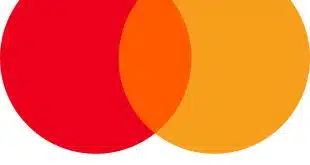Consumers spend up to $1.5 trillion a year using on small purchases using cash, depending on who's estimating, but converting so-called micropayments into electronics will be one of the payment card industry's tougher challenges. Experts contacted by this newsletter's sister publication Digital Transactions magazine for an upcoming story on micropayments foresee no single technology or product cracking the under-$5 micropayments market. Instead, they see a multifront attack involving contactless cards, cell phones, and other technologies and pricing strategies in order to scale the walls of one of the last bastions of cash. Citing research from a number of government, industry, and business-press sources, Federal Reserve Bank of Philadelphia payments analyst James C. McGrath estimates that about $1.3 trillion is spent in cash at the point of sale in the U.S. But in 2004, credit and debit card payments of under $5 amounted to only $13.5 billion, he noted in a recent report. About $160 billion in current cash transactions is especially suited to small-ticket electronic payments, notably payments at quick-service restaurants, vending machines, and parking facilities. “The trend does point one way, and I think that lots of people in the payments space see these small transactions more or less as the final frontier,” says McGrath. The market is growing fast?probably 25% or more annually, according to experts contacted by Digital Transactions. But growth rates might even be higher if electronic payment forms could match the speed and convenience of cash in every merchant segment, and counter merchants' perceptions that micropayments cost too much. The payment card networks have embarked on various initiatives to address the issues. Visa USA earlier this year launched a program to drive small-ticket payments, including breaks on interchange that now apply to 14 merchant categories for payments of under $15 (Digital Transactions News, April 13). Visa also is considering everything from rewards programs to marketing campaigns in order to drive small-ticket payments, including what it defines as micropayments?transactions of $2 or less. “Our role in the marketplace is really to develop the right products consumers want to use … and merchants want to accept,” says Niki Manby, senior vice president of product and innovation. Many payments executives see contactless cards as a tool to increase micropayments transactions. Wells Fargo and Co. in August began rolling out Visa contactless cards to its credit card holders and now has 125,000 such cards outstanding. Peter Ho, product manager for Well Fargo Contactless, expects the bank will have 400,000 such cards outstanding by year's end. Getting more micropayments transactions “was one of the top reasons” Wells became interested in contactless cards, he says. Ho wouldn't say how much under-$5 volume is coming through the new cards, but notes, “we are seeing that people are spending more money and more often.” Meanwhile, a new report from Boston-based Strategy Analytics Inc. claims that consumers worldwide will spend up to $36 billion on cell-phone payments by 2011, more than 10 times the current level. Many of these will be micropayments. But Europe and Asia are ahead of U.S. cell-phone carriers in developing payments, according to Dennis Moroney, senior analyst at Needham, Mass.-based research firm TowerGroup Inc. “They haven't really pushed aggressively to cross-sell into credit markets, to sell products other than communications,” he says.
Check Also
The Clearing House’s ACH Volume Swells As Adoption of Digital Transactions Spreads
Transactions on the Electronic Payment Network, the automated clearing house network, operated by The Clearing …





